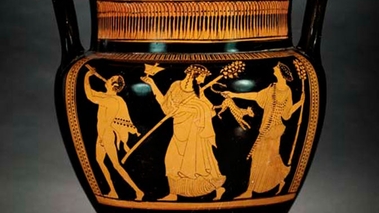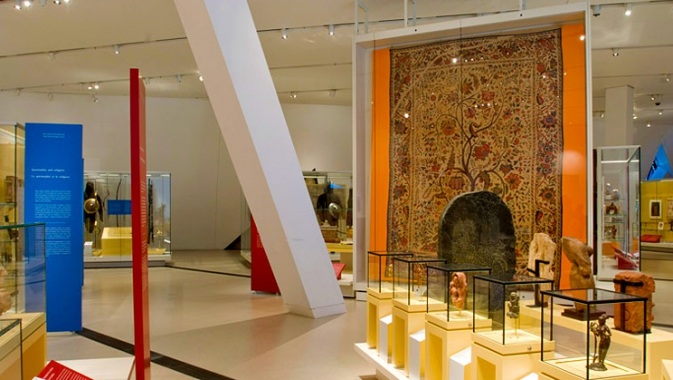Recently, my husband and I visited the Royal Ontario Museum, commonly known as the ROM, in Toronto, Ontario. The ROM is an amazing place, full of natural specimens and cultural artifacts. You'd need a few weeks to fully explore the entire collection. Because we only had a day, my husband and I decided to focus our attention on the museum's third floor, which features artifacts from many world cultures from prehistory to the 20th Century. As we strolled through the African baskets, eastern Buddhas, Egyptian cat mummies, Grecian pottery and Rococo furniture, I felt inspired and affirmed as an artist. Maybe that's obvious: a trite reaction. But there were two things in particular that I realized in a refreshing and uplifting way.  Greek pottery from the ROM's collection (photo from the ROM). Greek pottery from the ROM's collection (photo from the ROM).The first thing that struck me like a two-by-four was the fact that art, adornment and beauty have been a necessary part of culture from the beginning of time. As an artist/artisan, I sometimes wonder, "What's the point? Nobody really needs the stuff I create." These misgivings were clearly challenged by what I saw at the ROM. Through many ages of history, artists and craftspeople were highly esteemed in all cultures, and their work touched every aspect of life: birth, work, celebration and death. Artistic items like beads and jewelry were sometimes used as currency. Jewelry and decorative, artistic detail in clothing have been part of every world culture as soon as people could work metal and weave fabric. In other words, art has always been integral to life. In fact, without art, the ROM would have very few cultural artifacts, and we would know very little about the people who came before us. The second affirmation I experienced during my visit to the ROM was that upcycling and repurposing are age old practices. People have always used the everyday objects around them to create art, clothing and jewelry. I saw jewelry made from the garbage and trifles of ages past: bone, seed pods, animal teeth, stones, scraps of leather and wood, tiny pieces of shell. Feathers, fur and hair were incorporated into art, masks and even weapons. I think it's only since industrialization that people have had the "luxury" to waste. We can learn a lot from the multitudes who lived before industrialization about finding practical and beautiful uses for scraps and shards. I've always thought of my efforts in upcycling as being mindful of the present and future, but now I see they're also deeply connected to the past. |
August 6, 2013
Guest Post~ Jane Koopman
Labels:
antiques,
art,
artifacts,
creative reuse,
culture,
history,
teamupcyclers,
upcycled,
Upcyclers,
upcycling
Subscribe to:
Post Comments (Atom)


What an inspiring post! We spent some time exploring the Smithsonian this summer and feel the same way. Beautiful thoughts. Thanks for sharing.
ReplyDelete